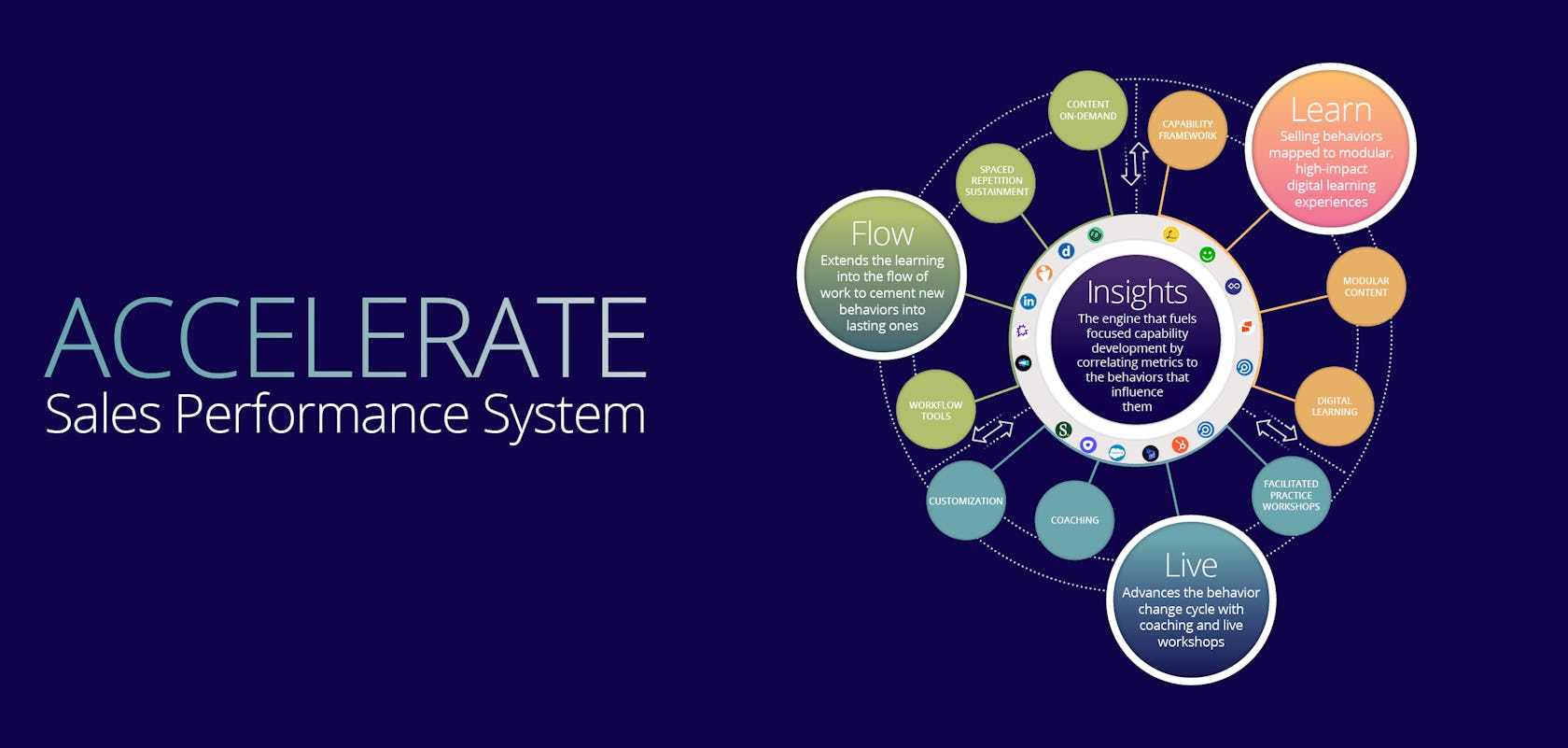
Build Revenue-relevant Selling Behaviors with Personalization and Precision
The Accelerate Sales Performance System is a comprehensive sales capability building solution that brings clarity to the most critical skill gaps you need to address to move your business metrics. This innovative solution provides a personalized and engaging seller experience that is organized around a set of defined sales capabilities driven by your RevTech data. The Accelerate Sales Performance system is comprised of 4 key components: Accelerate Insights, Accelerate Learn, Accelerate Live, and Accelerate Flow. Learn more about each of these components below.

Accelerate Insights
Accelerate Insights is the engine of the Accelerate Sales Performance System. It aggregates data across your RevTech stack to deliver focused, personalized, ongoing capability development that connects business metrics to the selling behaviors that influence them.
Learn More
Accelerate Learn
Accelerate Learn transforms the Richardson Sales Capability Framework into world-class digital learning. Personal learning recommendations are delivered based on real-time performance metrics and capability assessments.
Learn More
Accelerate Live
Accelerate Live is where personalized feedback, coaching, and real-world practice take sellers to their next level of performance. Building upon digital learning, virtual and live workshops advance the behavior change cycle. Our facilitators ensure your sellers are challenged, engaged, and leave better than when they entered.
Learn More
Accelerate Flow
Accelerate Flow is where learning extends into the flow of work to cement new behaviors into lasting ones. CRM-enabled workflow tools embed best practices, learned skills, and in-the-moment coaching into the natural flow of work. Data from tool usage feeds back into the Insights engine to further enhance recommendations and measure the impact of behavior change in the field
Learn MoreDiscover how one system can enable your entire sales organization to reach new heights
Sellers
Your sales reps get a personalized, prioritized learning roadmap to build capabilities connected to the metrics that enable them to close more deals and drive more revenue.
Revenue Leaders
Revenue leaders can pinpoint where to focus resources, make data-driven decisions, and instantly see what investments are working for them.
Enablement Leaders
Enablement Leaders get insights that equip them to close skills gaps, align efforts with business goals, and effectively and efficiently measure impact.
Sales Managers
Sales Managers can access a comprehensive view of individual and team performance enabling them to maximize performance, coach where it counts, and drive continuous growth.
